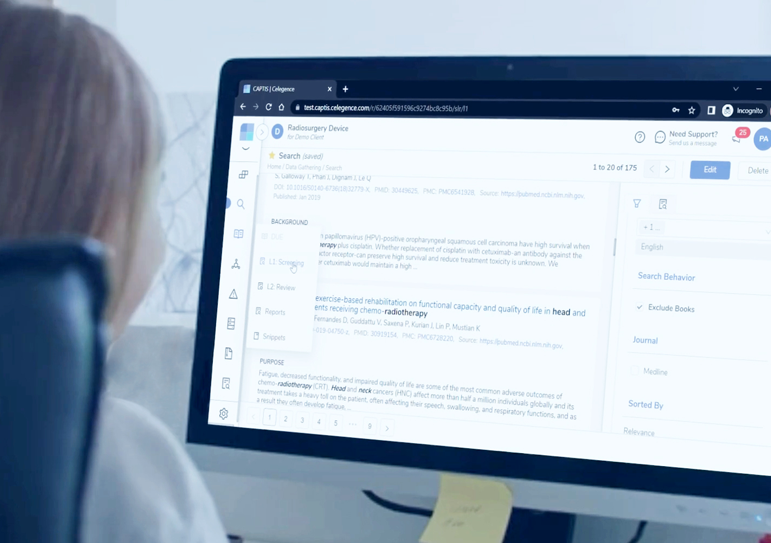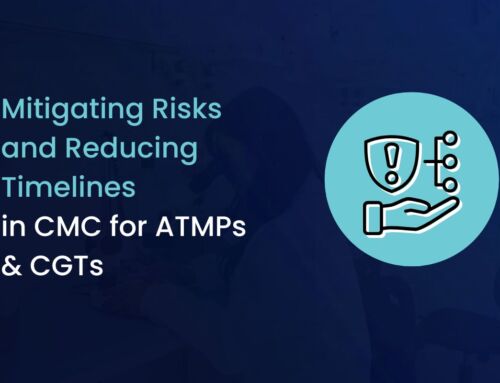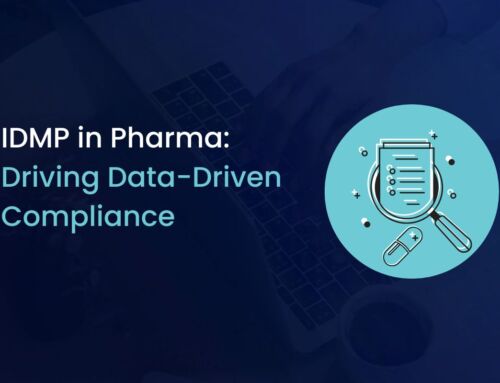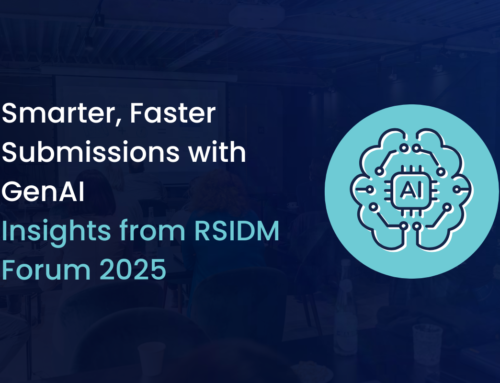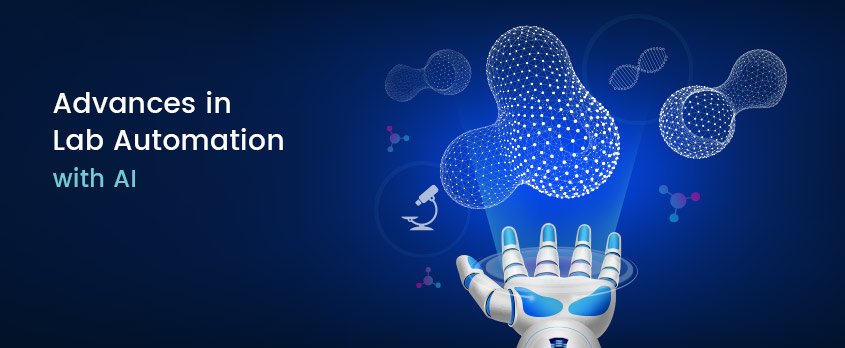
Advancements in Laboratory Automation with AI
Celegence has in its network many full-time medical writers and consultants who come from a variety of scientific backgrounds. One area of expertise is in the regulated bioanalytical space.
An important area of reporting regulated bioanalysis that Celegence has supported is in processing data and developing reports from bioanalytical studies. Leveraging advancements in laboratory automation with AI, ensures precision and accuracy in handling microtiter scale sample volumes during upstream processes. This automation facilitates sample preparation for bioanalysis with minimal human error. In downstream processes, AI-driven automation is increasingly utilized to electronically capture and store protocols and data generated from lab studies. This not only streamlines data management but also enhances data integrity and compliance. By integrating these advanced technologies, Celegence helps clients achieve higher efficiency and reliability in their bioanalytical reporting.
In this post, we’ll discuss how advanced lab automation is impacting processes and touch on the lab automation software that is leading the transition to AI-powered labs.
What Is Total Laboratory Automation?
Laboratory automation is the use of robots to replace manual work in laboratory processes. There are 2 types of automation – targeted task automation (TTA) and total lab automation (TLA). TTA is the automation of individual steps in a workflow.
Total laboratory automation systems automate all individual components in the workflow. For example, in a microbiology lab, the workflow begins from the inoculation of the microbial culture followed by incubation and then analysis of results which are then documented.
The main advantage of automated systems is to save researchers from carrying out repetitive, time-consuming, and labor-intensive tasks. Laboratory automation also improves data accuracy, and reliability, and reduces experimental errors leading to higher efficiency.
Turnaround times (TAT) are also greatly reduced as higher throughput is achieved with the efficient use of resources and quick standardization of processes.
Lab automation and AI are useful in establishing the quality and safety of lab testing in addition to providing cost-effective solutions with higher ROIs in the long-term.
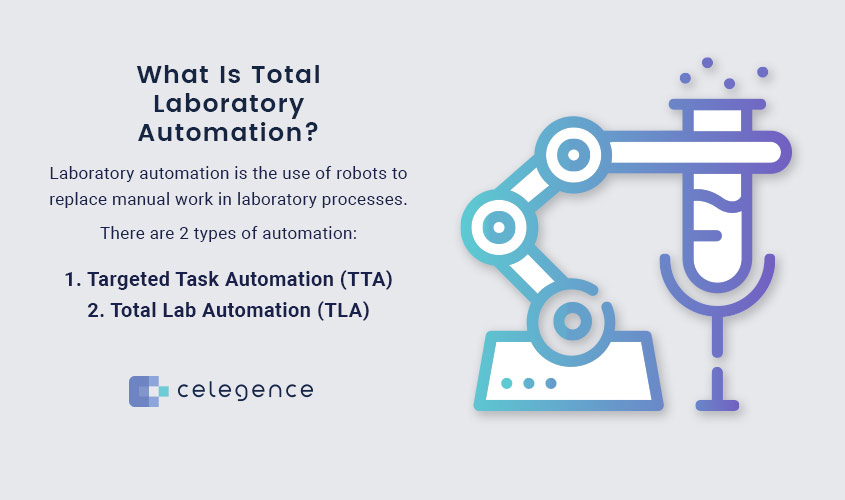
Laboratory Automation Does Not Fully Replace Professional Expertise
That said, laboratory automation is an efficient tool to assist professionals, but it does not fully replace professional expertise as human input is essential to qualitatively assess the results. The complex decision-making process to carry out subsequent investigations also requires human intervention particularly when AI is used in medical diagnosis. In addition to this, further research is required to minimize negative impacts arising from the increased generation of noise and heat from machines, psychological dependence on machines, disruption of staff trained in specific technologies, and the expenditure from infrastructure required to install TLA.
Check out our behind the scenes look at CAPTIS in our exclusive on demand video to see how you and your business can benefit from CAPTIS AI.
Laboratory Automation Software
Automation in many laboratories is carried out with the integration of operating system software and laboratory information systems (LIS) where this is available. The key function of the operating system is to steer the hardware and ensure the test samples are traceable and error-free when sample processing steps are involved. Central computer systems function as the interface to drive the operating system and LIS. LIS are generally equipped to manage analytical protocols, connections to automated equipment, and generate reports. Decision rules are set based on predefined criteria that enable auto verification of data, automatic re-analysis of samples with highly abnormal or suspect results, as well as triggering reflex (reflective) and add-on testing, thus ultimately contributing to enhancing the quality and safety of diagnostic testing with clinical laboratory automation. High-risk activity arising from manual data transcription has been alleviated with query-host communication networks that result in reduced turnaround times.
There are 2 broad areas where AI is being implemented in laboratories:
- in tackling internal challenges in the lab to improve the accuracy of results to inform clinicians.
- to identify cohorts of patients with specific characteristics and care processes to close quality gaps in health delivery systems through automated alert systems and predictive analytics.
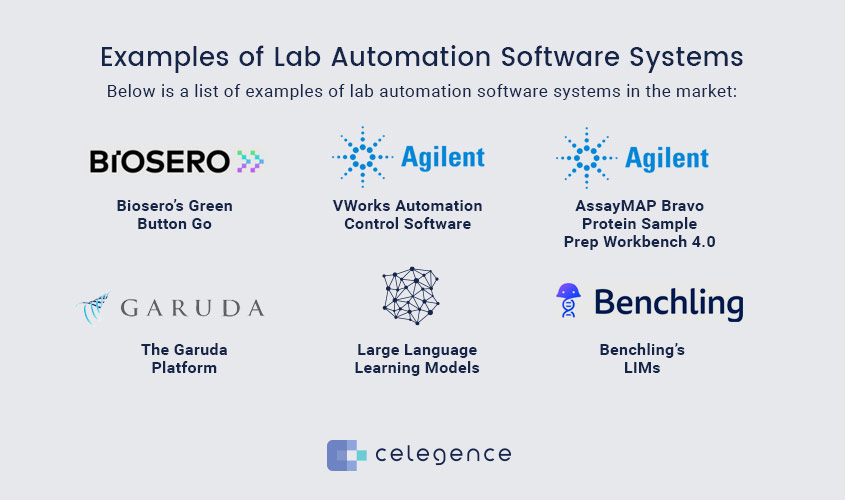
Examples of Lab Automation Software Systems
Below is a list of examples of lab automation software systems in the market –
- Biosero’s Green Button Go is a type of automation scheduling software that can perform dynamic scheduling and runs with liquid handlers, incubators, dispensers, and washers. It also has the functionality to simulate automated workflows and supports experimentation with automation design.
- VWorks automation control software is a powerful and intuitive system from Agilent that is compatible with their next-generation sequencing workstation, their liquid handling platform, and the microplate replication workflow. Data visualization and data mining are also useful features of this software.
- AssayMAP Bravo Protein Sample Prep Workbench 4.0 software has optional compliance-enabling features that confer data integrity, security, and audit traceability for labs involved in drug development, preclinical trials, manufacturing, and quality control.
- The Garuda platform was developed using language-independent APIs to build customized automation dashboards with different modules.
- Manual entry of laboratory data and traditional Optical Character Recognition (OCR) can also be substituted with AI-based solutions such as Rossum. This software program captures data from lab reports using AI and computer vision technology with great accuracy and lower incurred costs.
- A recently published study from researchers at CMU describes the stepwise fully automated process used to synthesize known chemical compounds using publicly available data. The automated process is developed using Large Language Learning Models (LLMs) from Open AI (GPT-4) and Claude (Anthropic). Large language learning models are pre-trained with data from deep learning and neural networks and use language text as prompts to process information and output the required result. The LLMs comprise an encoder and decoder that retrieve the meaning and understand the relationships between the words. The user input is processed by the Planner module which sequentially invokes commands to initiate the workflow and identifies the protocol required to carry out the chemical synthesis. Claude processes content in a sequence of tokens and is limited to a maximum text length of 100,000 tokens. It is governed by regulatory guidelines to safeguard the privacy of the user’s data and security. GPT-4 is accurate in coding and can perform complex math, reasoning and is available in over 200 languages.
- Benchling’s LIMs are another example of AI in laboratories where LLMs are being used for report generation, bioprocess strain optimization, and molecular design.
- AI-based targeting of rare subcellular features is also being explored using images obtained from cryo-electron tomography.
There have also been advances in the application of digital imaging in microbiology using machine learning algorithms, where an artificial intelligence screen is used for the detection of growth or no growth in culture plates placed in smart incubators equipped with cameras. Further studies and investigations are required to draw a robust clinical-grade judgment from the use of AI technology.
Clinical Laboratory Automation
Clinical laboratory automation aids in relieving pressure on the healthcare systems through pre-analytical and post-analytical automation solutions.
Pre-analytical automation solutions in the laboratory include test selection, patient and specimen identification, collection of samples, handling of samples, sorting out, pipetting, and finally, centrifugation. Automated specimen inspectors are also being developed to examine specimen quality issues such as proper labelling, sufficient volume, and correct vial additives. Post-analytical solutions include sample retrieval for dilutions, repeat or add-on testing, and sample disposal. AI is increasingly used in the drug discovery process to identify new drug targets based on neural networks and machine learning models. There are regulatory organizations such as the Artificial Intelligence in Healthcare (AAIH) that developed a standardised platform to evaluate the performance of generative AI models.
Microbiology Automation
Repetitive steps such as Petri dish selection, sample inoculation, spread-plating on agar plates, and labelling have also been automated using instruments such as the WASP (Copan), Previ‐Isola (BioMerieux), Innova (Becton‐Dickinson) and Inoqula (KIESTRA) systems. Among these, two are Food and Drug Administration (FDA) – approved microbiology laboratory automation platforms in the United States, namely, WASPLab (Copan Diagnostics Inc.) and Kiestra (Becton Dickinson).
EvoBot is an automated mobile robot that is known to be used in Adaptive Laboratory Evolution (ALE experiments) to carry out sample dilutions. Dilution is a crucial step in this process since the microorganisms need to be maintained at the exponential growth phase. EvoBot streamlines the process as it can autonomously perform liquid handling tasks with precision and traverses different locations where the workstations are located. The robot inoculates 96-well plates row-wise and rows that have been inoculated are stirred by the liquid handler thus reducing the need for manual effort from once a day to approximately once a week based on the type of culture. The software repository is open-source and is based on Python, Raspberry Pi, and APIs. Computer vision technology is used for navigation.
Molecular Biology Automation
Pipetting robots perform precise and consistent sample transfers during clean-up steps. They reduce manual errors and enhance reproducibility. Vialab software from Zymo Research is an example of automation software in molecular biology research. The ASSIST PLUS pipetting robot is an efficient tool for DNA purification and cleanup. The instrument varies on the quantity of the DNA obtained. Zymo’s DCC robot is suitable for sequencing, microarray analysis, PCR and restriction endonuclease procedures. Magnetic beads are used for efficient purification.
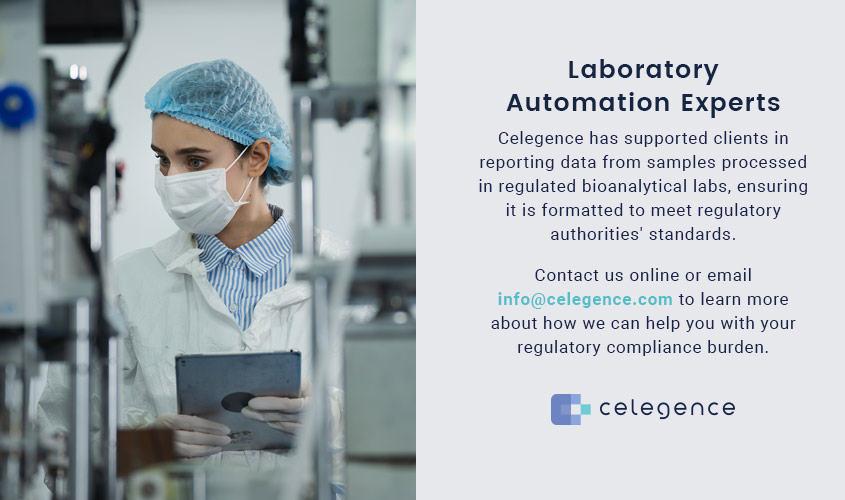
Laboratory Automation Experts
Celegence, led by Sonia Veluchamy, has supported clients in reporting data from samples processed in regulated bioanalytical labs, ensuring it is formatted to meet regulatory authorities’ standards. This includes comprehensive data analysis, validation, and documentation, which are critical for regulatory submissions. By leveraging our expertise, clients can confidently navigate the complexities of regulatory compliance and expedite the approval process for their products
Contact us at info@celegence.com to learn more about how Celegence can help you with your regulatory compliance burden.
Check out our behind the scenes look at CAPTIS in our exclusive on demand video to see how you and your business can benefit from CAPTIS AI.
